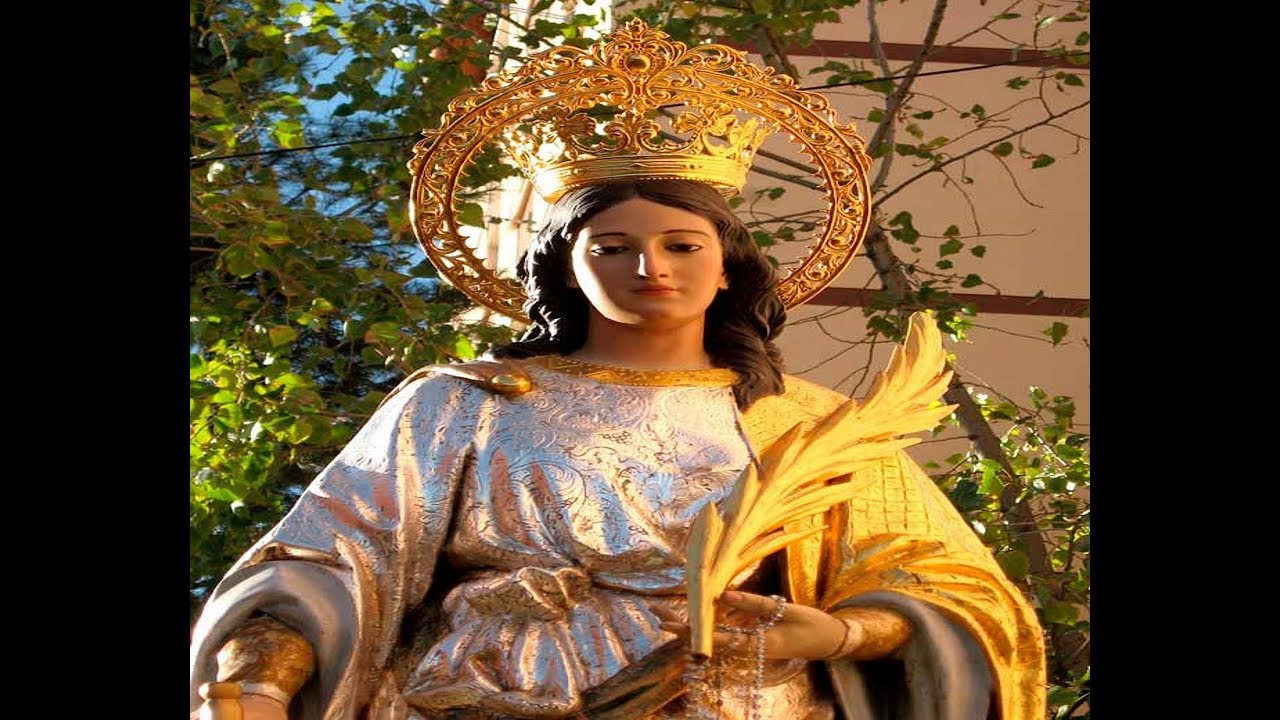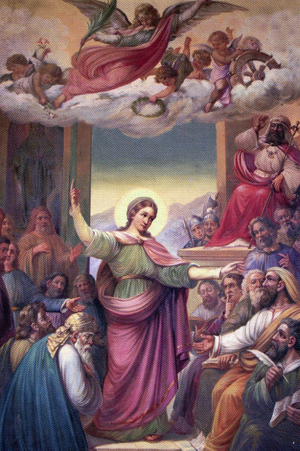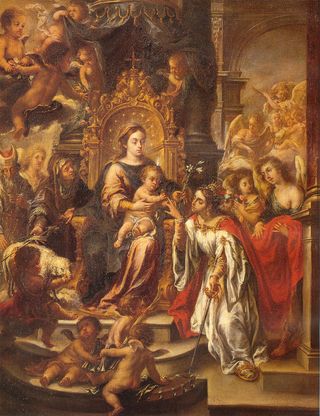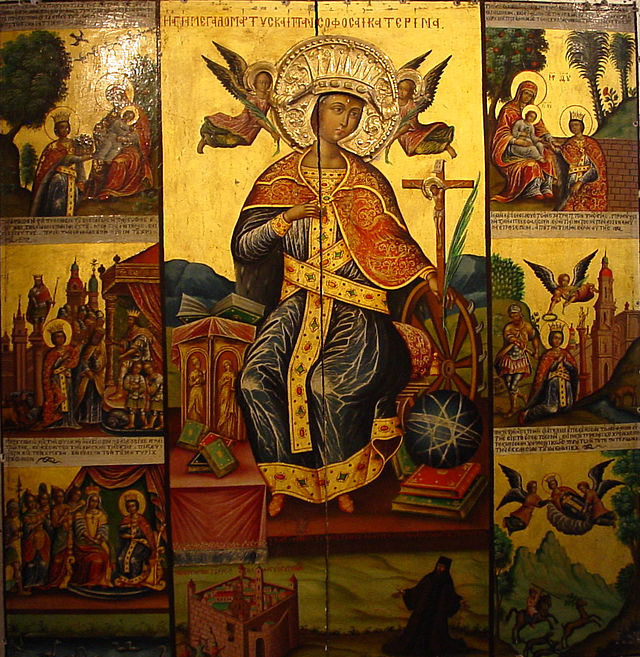Catherine of Alexandria was a Christian martyr in the 4th century. Her feast is celebrated on November 25. Her cult spread throughout Europe from the 6th century, with emphasis between the 10th and 12th centuries. It is included in the group of helper saints and is invoked against sudden death.
Catherine was born around 290 into a noble family from Alexandria, Egypt. Endowed with great intelligence, she soon stood out for her extensive studies, which placed her on the same level as the great poets and philosophers of the time. One night Christ appeared to her and decided, at that moment, to consecrate his life to him, considering herself, since then, his fiancee.
Emperor Maxentius (306-312) came to Alexandria to preside over a pagan festival and ordered all subjects to make sacrifices to the gods. Catherine entered the temple, but instead of sacrificing, she made the sign of the cross. And addressing the emperor she rebuked her exhorting her to know the true God. Led to the palace, she reiterated her refusal to make sacrifices, but invited the emperor to a debate.
In the test of the philosophical debate, the wise men were converted to Christianity by Catherine, which provoked the anger of the emperor, who had the wise men executed, not without first proposing to Catherine that she marry one of them, to which she he flatly denied. Maxentius tried to convince her with promises, but when he failed, he had her flogged and later locked up in prison. There she was visited by the empress herself and an officer, Porfirio, who ended up converting along with 200 other soldiers. The emperor then ordered that Catherine be tortured using a machine made up of wheels fitted with sharp blades. According to Passio, the wheels broke when they touched the body of Catalina, who was unharmed. The empress tried to intercede on Catherine's behalf, but was beheaded, as were Porfirio and her 200 soldiers.
Her tomb had been found at the foot of Mount Sinai, in the monastery that bears her name, which led to pilgrimages from all over the world, especially appreciated by pilgrims from the Holy Land. Legend has it that the monks of the monastery built at the foot of Mount Sinai discovered in a mountain cave the intact body of a young woman whom they recognized as Catherine of Alexandria. According to Passio, the body had been deposited there by angels. Thus, the Passio is adorned with a set of hagiographic, not historical, common places.
Later dissemination: The first vestige of her cult was found in an 8th century painting found in Rome. Its veneration spread from the second half of the 10th century, and was one of the most widespread throughout Europe, particularly in France, in the 12th century, at the hands of the Crusaders. The Orthodox Church celebrated it. Saint Catherine and Saint Dorothea were depicted with great frequency on medieval Hungarian altars throughout the 14th and 16th centuries, becoming very popular figures alongside Saint Elizabeth of Hungary and Saint Margaret of Hungary. The cult of Santa Catalina spread throughout Europe: many churches have images or pictures of the saint.
The spread of the devotion inspired the artists, who represent the saint with a tricolor aureole: white, symbolizing her virginity; green for her wisdom and red for her martyrdom. The wheel that was used for her torture is, almost always, represented behind her.
The oldest account that deals with the life of Saint Catherine is located more than 500 years after the supposed date of her martyrdom, attributed to the Emperor Basil I in 866, although the rediscovery of her relics in the monastery of Mount Sinai is it dates to the year 800.5 and presumably implies a cult existing at that date. The monastery was built by order of Emperor Justinian I, to which was added the Chapel of the Burning Bush built by Helena, mother of Constantine I, in the place where Moses supposedly contemplated the burning bush. In addition, the most reliable texts in scientific rigor such as the hagiographic investigations of the Bollandists known as Acta Sanctorum are accepted as historically valid to understand their primary cult as a historical character.

 ESPAÑOL
ESPAÑOL ITALIANO
ITALIANO










